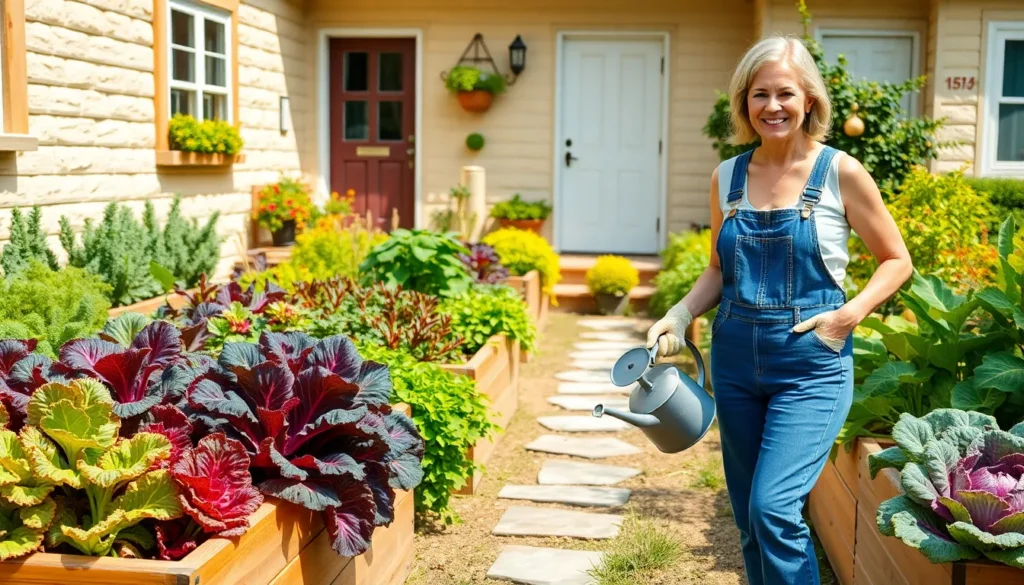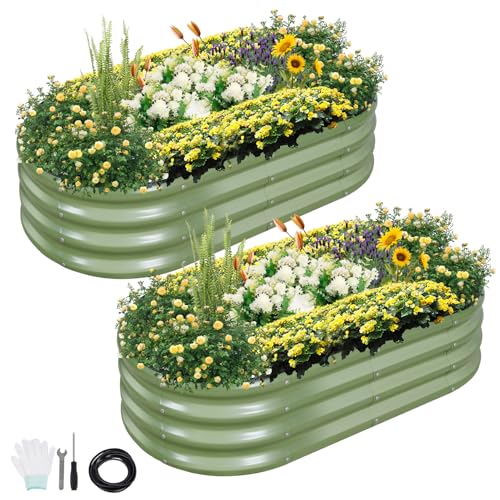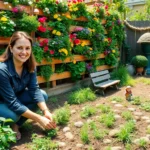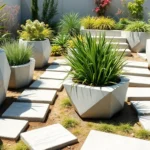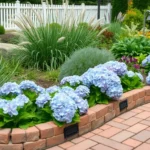We’ve all walked past those perfectly manicured front lawns and wondered what else we could do with that prime real estate. Why not transform your front yard into a stunning vegetable garden that’s both functional and beautiful? Gone are the days when vegetable gardens belonged hidden in backyards – today’s front yard food gardens are making a bold statement while providing fresh produce right at your doorstep.
Growing vegetables in your front yard isn’t just about saving space; it’s about creating an edible industry that enhances your home’s curb appeal. From raised beds filled with colorful lettuce varieties to vertical trellises showcasing climbing beans, there are countless ways to design a front yard garden that’ll have your neighbors asking for tips.
We’ll explore creative design ideas that blend aesthetics with productivity, ensuring your front yard vegetable garden becomes the envy of the neighborhood while supplying your kitchen with fresh, homegrown goodness.
Choose the Right Location for Maximum Sun Exposure
Success in front yard vegetable gardening starts with understanding your space’s sun patterns and accessibility needs.
Assess Your Front Yard’s Natural Light Patterns
Observe sunlight exposure throughout different seasons to identify the best spots for your vegetables. Most vegetables need 6-8 hours of direct sunlight daily, making south-facing areas typically ideal for maximum growth. We recommend tracking sun patterns for at least a week during spring or summer to map out full sun, partial sun, and shaded zones.
Document shadow patterns cast by trees, buildings, and structures at different times of day. Morning shadows from your house might clear by 10 AM, while afternoon shadows from neighbor’s trees could start at 3 PM. These observations help determine which vegetables to plant where, as leafy greens like lettuce and spinach tolerate partial shade better than tomatoes or peppers.
Test soil temperature in potential garden locations using a soil thermometer during early spring. Areas receiving more direct sunlight warm up faster, extending your growing season by 2-3 weeks. We’ve found that spots against south-facing walls or fences often provide the warmest microclimate for heat-loving crops like basil and eggplant.
Consider Proximity to Water Sources and Garden Maintenance
Position vegetable beds within 50 feet of water sources to make daily watering manageable without dragging hoses across your entire front yard. Convenient access to spigots or rain barrels reduces maintenance time and encourages consistent care. We suggest installing drip irrigation systems for beds located farther from water sources.
Plan pathways between garden beds and your front door to encourage regular harvesting and maintenance visits. Vegetables like cherry tomatoes and herbs benefit from daily picking, while crops like zucchini need frequent monitoring to prevent oversized produce. Easy access means you’ll notice pest problems, disease issues, or harvest opportunities sooner.
Locate maintenance-intensive crops closer to storage areas where you keep garden tools, fertilizers, and pest control supplies. Heavy feeders like tomatoes and squash require regular fertilizing, while crops prone to pests like cabbage need frequent inspection. We position these higher-maintenance vegetables in easily accessible spots to streamline our garden care routine.
Design Raised Bed Gardens for Better Curb Appeal
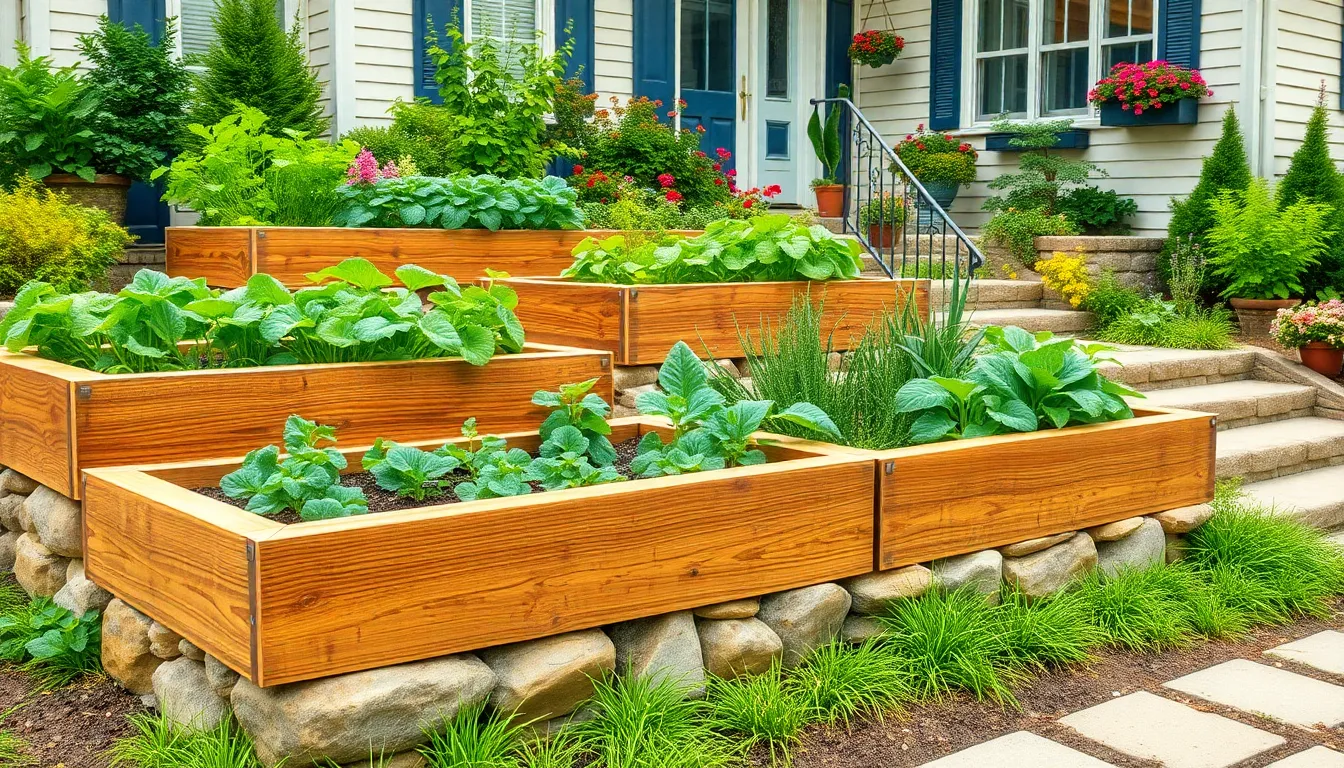
Raised bed gardens transform ordinary front yards into sophisticated growing spaces that catch every neighbor’s eye. We’ll show you how to create stunning elevated gardens that boost your home’s visual appeal while producing fresh vegetables.
Build Rectangular Raised Beds with Quality Materials
Rectangular raised beds create clean lines that complement most home architectural styles. We recommend building beds with proper dimensions for efficient gardening and maintenance access.
Choose materials that enhance your home’s existing aesthetic. Woven wicker raised beds add natural texture and warmth to contemporary landscapes. Upcycled pallets offer an eco-friendly option that brings rustic charm to your front yard design. Clay bricks provide timeless elegance and durability that matches traditional home styles.
Focus on proper width and depth measurements for optimal plant growth. We suggest keeping bed widths between 3-4 feet to allow easy reach from both sides without stepping on soil. Depth should measure 8-12 inches for most vegetables, though root crops need deeper soil profiles.
Select loose, well-drained soil enriched with compost and organic matter. Quality soil foundation ensures healthy plant development and prevents waterlogged conditions that damage roots. We mix equal parts topsoil, compost, and coarse sand to create ideal growing medium for front yard vegetable beds.
Create Tiered Garden Levels for Visual Interest
Tiered garden levels add dramatic vertical elements that maximize growing space while creating stunning focal points. We design multiple elevation levels using stone or brick borders to define each growing area clearly.
Stone borders provide natural-looking transitions between different garden heights. We recommend using locally sourced fieldstone or decorative industry blocks to create sturdy retaining walls. These materials blend seamlessly with existing hardscape elements around your property.
Incorporate ornamental plants alongside vegetables for potager-style gardens. We combine colorful Swiss chard with purple petunias, or intermix herbs like rosemary with flowering marigolds. This approach creates beautiful mixed plantings that serve both decorative and culinary purposes.
Install drip hose and irrigation systems for uniform watering across all tiers. We position water lines strategically to reach every level without creating visible clutter. This efficient system maintains consistent moisture levels while reducing daily maintenance tasks.
Use pots and hanging baskets in smaller front yard areas. We place container gardens on different tier levels to create layered growing spaces. These portable options allow us to grow vegetables and fruits even in the most compact front yard locations.
Incorporate Edible Landscaping with Ornamental Vegetables
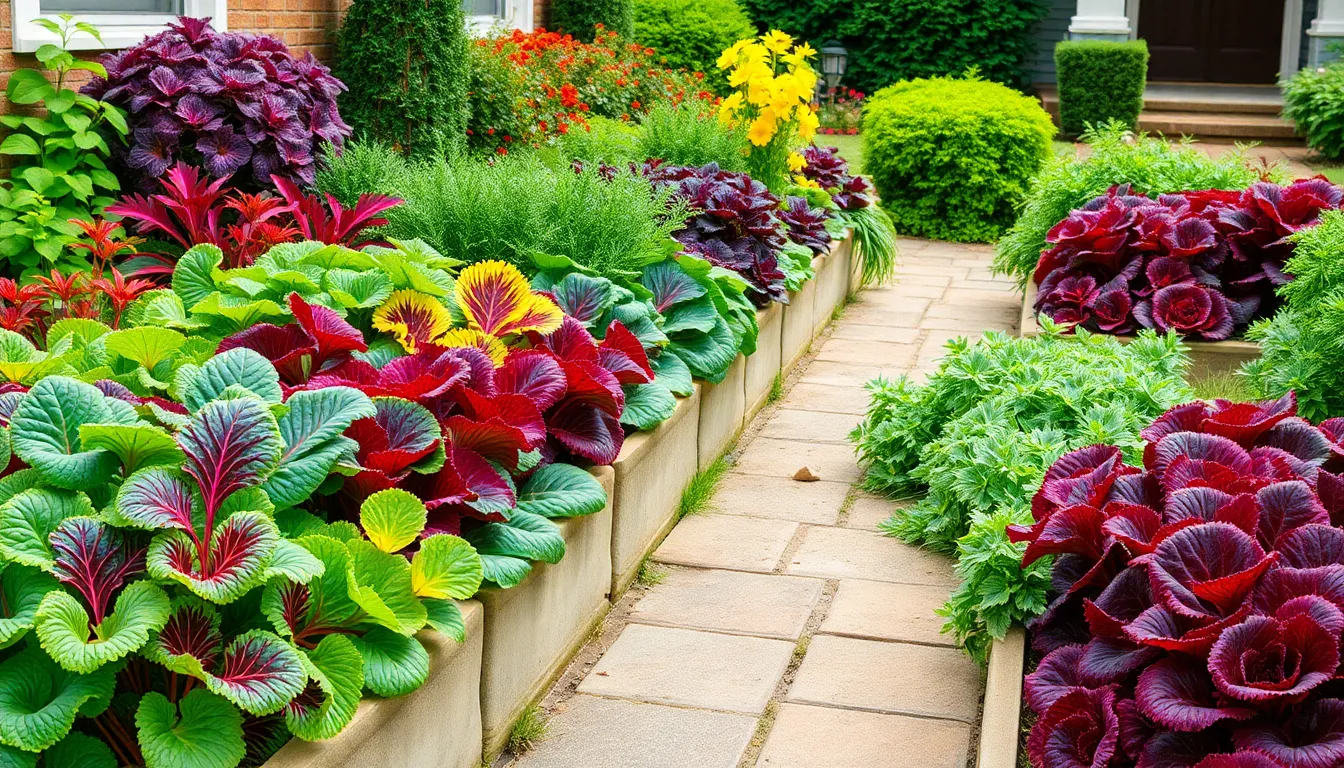
Edible landscaping transforms our front yard gardens by combining vegetables and herbs with traditional industry design. This approach creates visually appealing gardens that serve as both functional food sources and attractive industry features.
Plant Colorful Swiss Chard and Rainbow Carrots
Swiss chard varieties offer vibrant foliage in shades of red, yellow, orange, and pink that maintain visual interest throughout the growing season. We can plant these colorful specimens in repeating patterns along pathways or mix them with flowering annuals for enhanced appeal. Rainbow carrots provide unique color combinations below ground while producing delicate, feathery green tops that add texture to our garden beds.
These ornamental vegetables work exceptionally well in raised beds constructed from materials like wood, woven wicker, or clay bricks. We should fill these structures with compost-rich, well-drained soil to ensure optimal plant growth and maintain the neat appearance essential for front yard gardens. Square-foot gardening techniques help us maximize yield while keeping our displays tidy and organized.
Add Purple Cabbage and Red Lettuce for Visual Impact
Purple cabbage creates striking contrast against lighter colored vegetables and provides bold architectural form in our front yard layouts. We can position these dramatic plants as focal points or use them as border elements alongside entryways where their deep purple hues make the strongest impression. Red lettuce varieties contribute rich burgundy tones that complement both purple cabbage and brighter vegetables.
Both vegetables thrive when planted in carefully edged raised beds or grown in pots and hanging baskets for smaller spaces. We should install drip hoses or irrigation systems to ensure consistent moisture for these leafy vegetables while maintaining our garden’s attractiveness. This combination of purple and red edibles allows us to achieve year-round color and harvest while keeping our front yard both beautiful and productive.
Install Vertical Growing Systems to Maximize Small Spaces
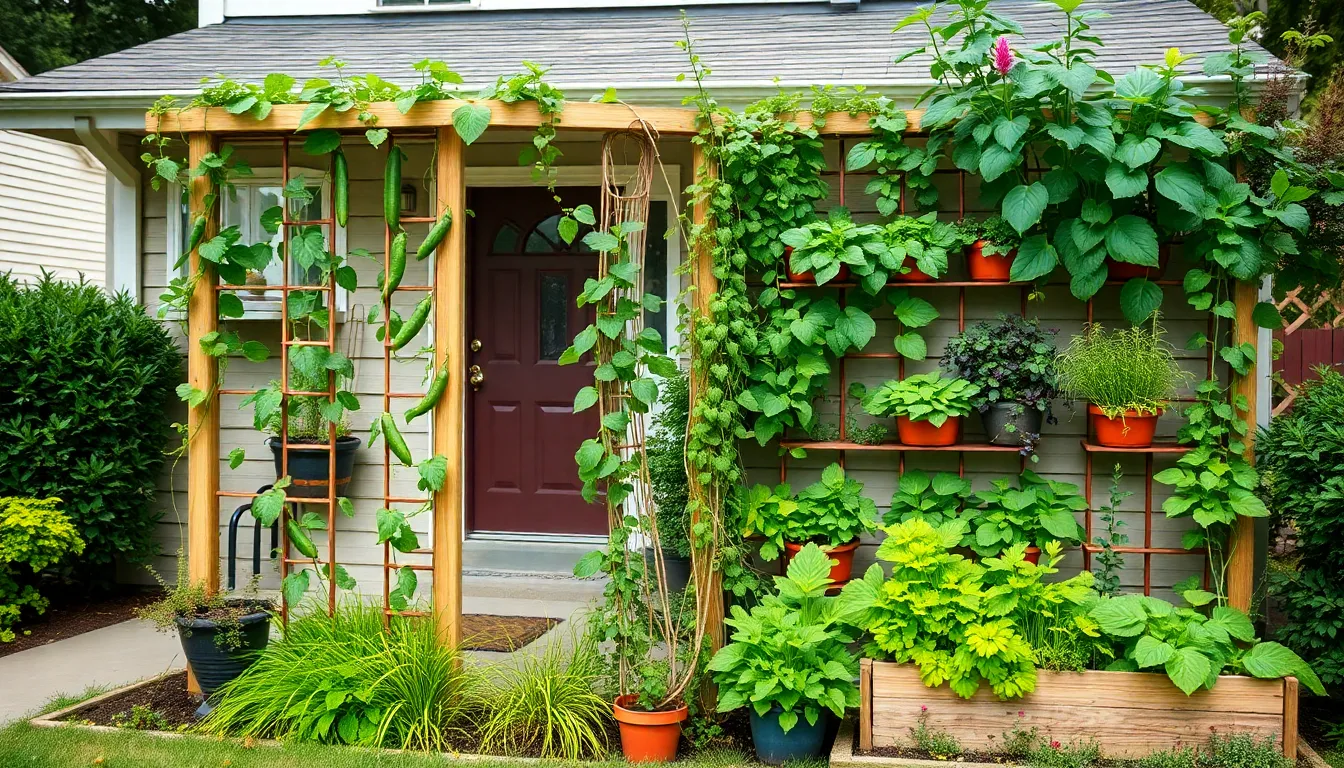
When we’re working with limited front yard space, vertical growing systems transform small areas into productive vegetable gardens. These upright structures allow us to grow more plants by utilizing wall space and height rather than spreading across valuable ground area.
Set Up Trellises for Climbing Vegetables
Trellises provide excellent support for climbing plants like peas, beans, and cucumbers while keeping our garden organized and space efficient. We can construct these vertical supports using sturdy materials such as cedar, metal, or composite materials that can handle the weight of mature plants loaded with produce.
Position trellises along fences or walls where climbing vegetables receive adequate sunlight throughout the day. Install them early in the growing season so young plants can begin climbing immediately after planting. Choose materials that complement our home’s exterior design to maintain curb appeal while maximizing functionality.
Secure trellises firmly into the ground or mount them to existing structures to prevent toppling during windy conditions. Space climbing plants appropriately along the base of each trellis to avoid overcrowding and ensure proper air circulation between plants.
Use Wall-Mounted Planters and Living Walls
Wall mounted planters offer perfect answers for growing herbs, leafy greens, and compact vegetables on fences or exterior walls. These systems work exceptionally well for lettuce, spinach, and small fruiting plants that don’t require extensive root space.
Create living walls using modular planter systems or pocket planters that can be arranged in attractive patterns. These vertical gardens not only produce fresh vegetables but also provide natural insulation for nearby walls and help purify the air around our homes.
Install proper drainage systems in wall mounted planters to prevent water damage to underlying structures. Select lightweight growing medium specifically designed for container gardening to reduce stress on mounting hardware while providing optimal nutrition for our plants.
Position wall mounted systems where they’ll receive morning sunlight but avoid harsh afternoon exposure that can stress plants and require excessive watering. Incorporate drip irrigation or self watering systems to maintain consistent moisture levels without manual watering multiple times daily.
Create Defined Pathways Between Garden Sections
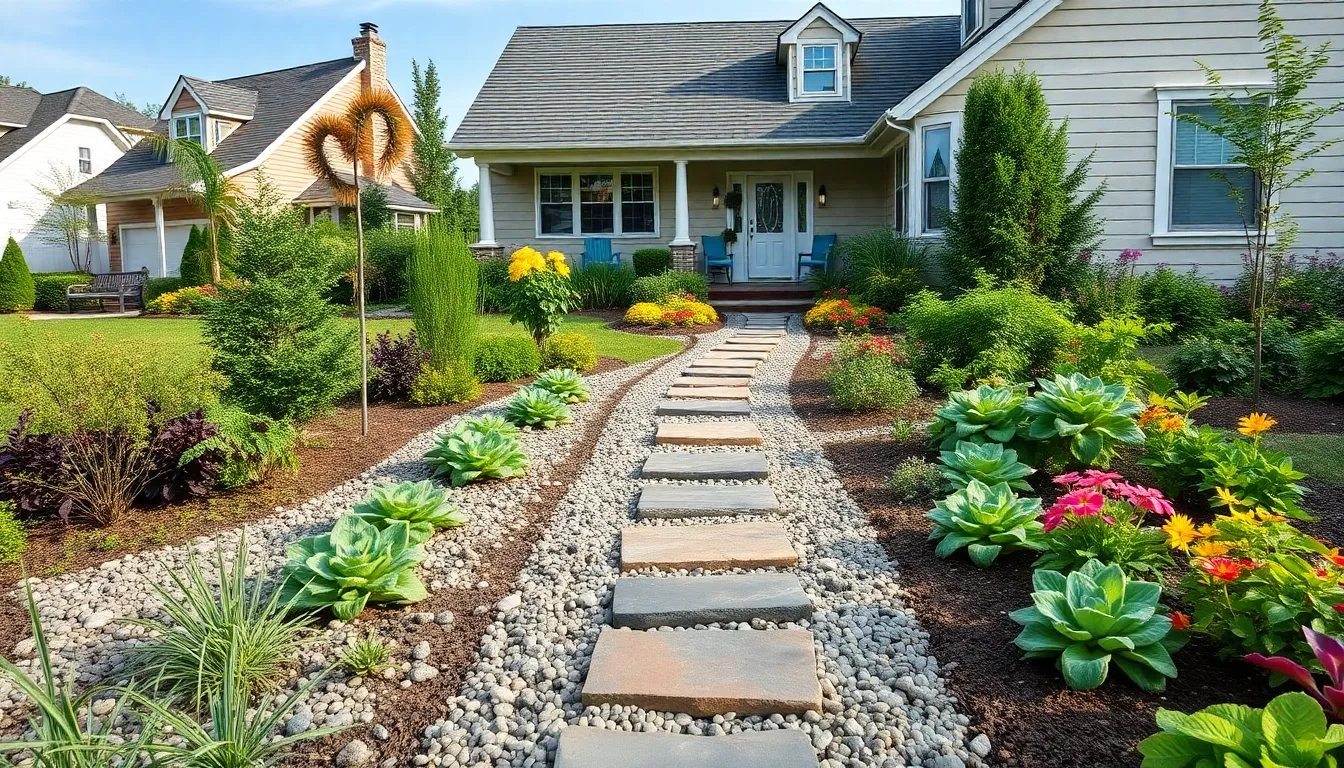
Well-designed pathways transform front yard vegetable gardens into organized, accessible spaces that prevent soil compaction while adding visual structure. These defined routes between garden sections make maintenance easier and create an inviting industry design.
Design Gravel or Stone Walking Paths
Gravel pathways offer durability and low maintenance for front yard vegetable gardens. We recommend choosing materials that complement your home’s architectural style while providing excellent drainage. Mediterranean and drought-tolerant garden designs particularly benefit from gravel’s neat contrast against raised beds and plantings.
Stone paths create a more formal appearance with endless pattern possibilities. Natural flagstone, brick pavers, or decomposed granite work exceptionally well for vegetable garden walkways. These materials withstand heavy foot traffic during planting and harvesting seasons without deteriorating.
Installation requires proper base preparation to ensure longevity. We suggest excavating 2-3 inches deep, adding industry fabric, then laying your chosen material with sand or gravel underneath. Edging materials like metal strips or stone borders keep pathways tidy and prevent spreading into garden beds.
Add Stepping Stones for Easy Garden Access
Stepping stones provide casual, organic pathways perfect for smaller front yards or limited spaces. These individual stones require less material than continuous paths while offering the same accessibility benefits. We position them at comfortable walking intervals, typically 18-24 inches apart for average stride lengths.
Natural stone, concrete pavers, or reclaimed materials work beautifully as stepping stones. Choose pieces that complement your existing industry elements and provide stable footing when wet. Irregularly shaped stones create flowing, naturalistic pathways, while uniform squares or rectangles offer structured appeal.
Strategic placement enhances both function and aesthetics in front yard vegetable gardens. We recommend creating main pathways to frequently accessed areas like herb sections or daily harvest crops. Secondary stepping stone routes can connect less visited areas while maintaining the garden’s organized appearance and preventing soil compaction from random foot traffic.
Select Low-Maintenance Vegetables for Busy Homeowners
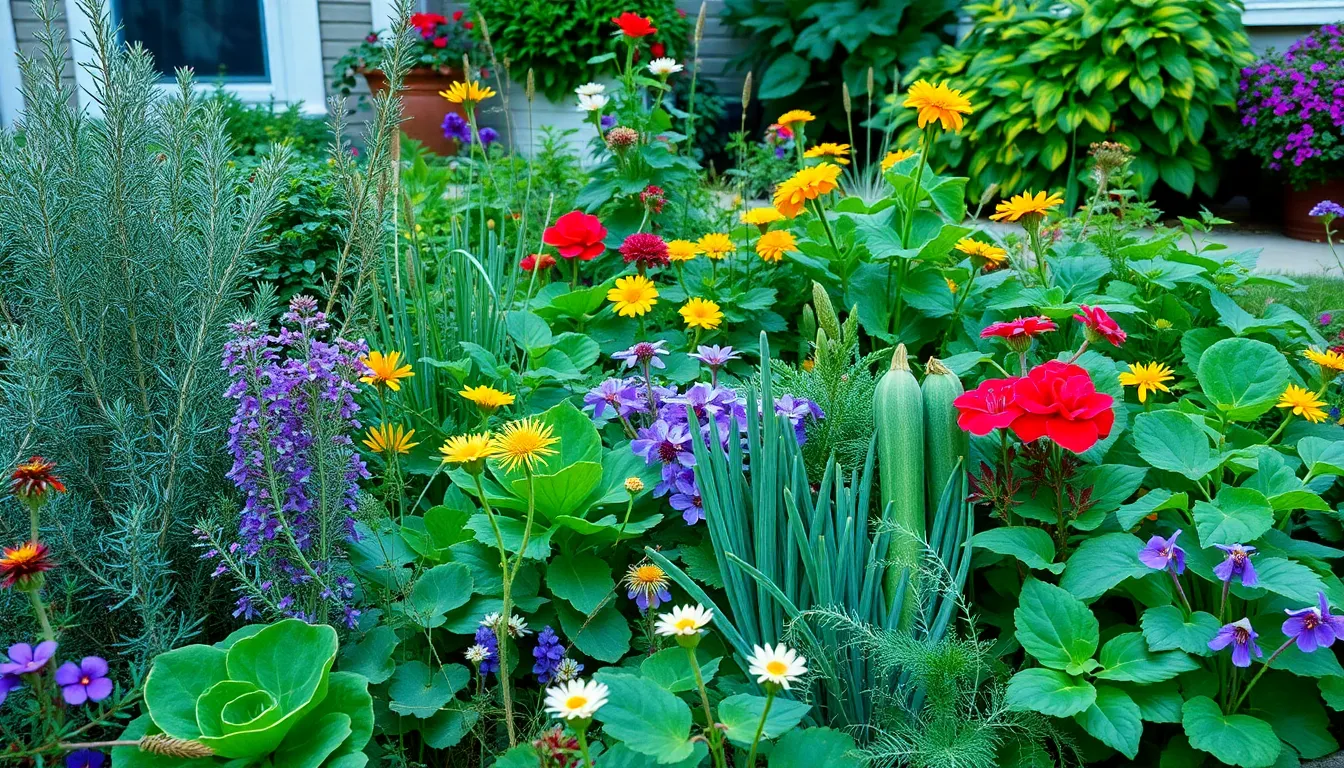
Selecting vegetables that thrive with minimal care becomes essential when managing a front yard garden alongside busy schedules. Low maintenance crops reduce time spent on daily garden tasks while still providing fresh produce for your kitchen.
Grow Hardy Perennial Herbs and Vegetables
Perennial herbs offer exceptional value for front yard gardens since they return year after year with minimal intervention. Rosemary, thyme, and oregano establish strong root systems that tolerate drought conditions and require little ongoing care beyond occasional harvesting. These herbs integrate beautifully into garden borders or mixed plantings with annual vegetables.
Planting perennial vegetables creates long term harvests without the need for yearly replanting. Asparagus, rhubarb, and artichokes develop into substantial plants that can serve as industry features while producing food for decades. Position these crops in raised beds where their permanent nature won’t interfere with seasonal plantings.
Incorporating drought tolerant and native plants alongside your perennial vegetables helps conserve water and reduces maintenance requirements throughout growing seasons. These plants naturally adapt to local climate conditions and typically need less fertilizer and pest management than non native varieties.
Choose Disease-Resistant Vegetable Varieties
Disease resistant vegetable varieties reduce the need for chemical treatments and lower overall maintenance demands in your front yard garden. These specially bred plants withstand common garden diseases like blight, mosaic virus, and powdery mildew without requiring frequent intervention from gardeners.
Examples of disease resistant vegetables include exact tomato cultivars marked with letters like VFN (indicating resistance to Verticillium wilt, Fusarium wilt, and nematodes), certain zucchini varieties, and cucumber types bred for downy mildew resistance. Seed packets and nursery tags clearly specify disease resistance characteristics to help you make informed choices.
Maintaining soil health and proper spacing further minimizes disease risk in your vegetable plantings. Enriching soil with compost improves drainage and provides beneficial microorganisms that suppress harmful pathogens, while adequate spacing ensures good air circulation around plants to prevent fungal diseases from taking hold.
Add Decorative Elements to Enhance Garden Aesthetics
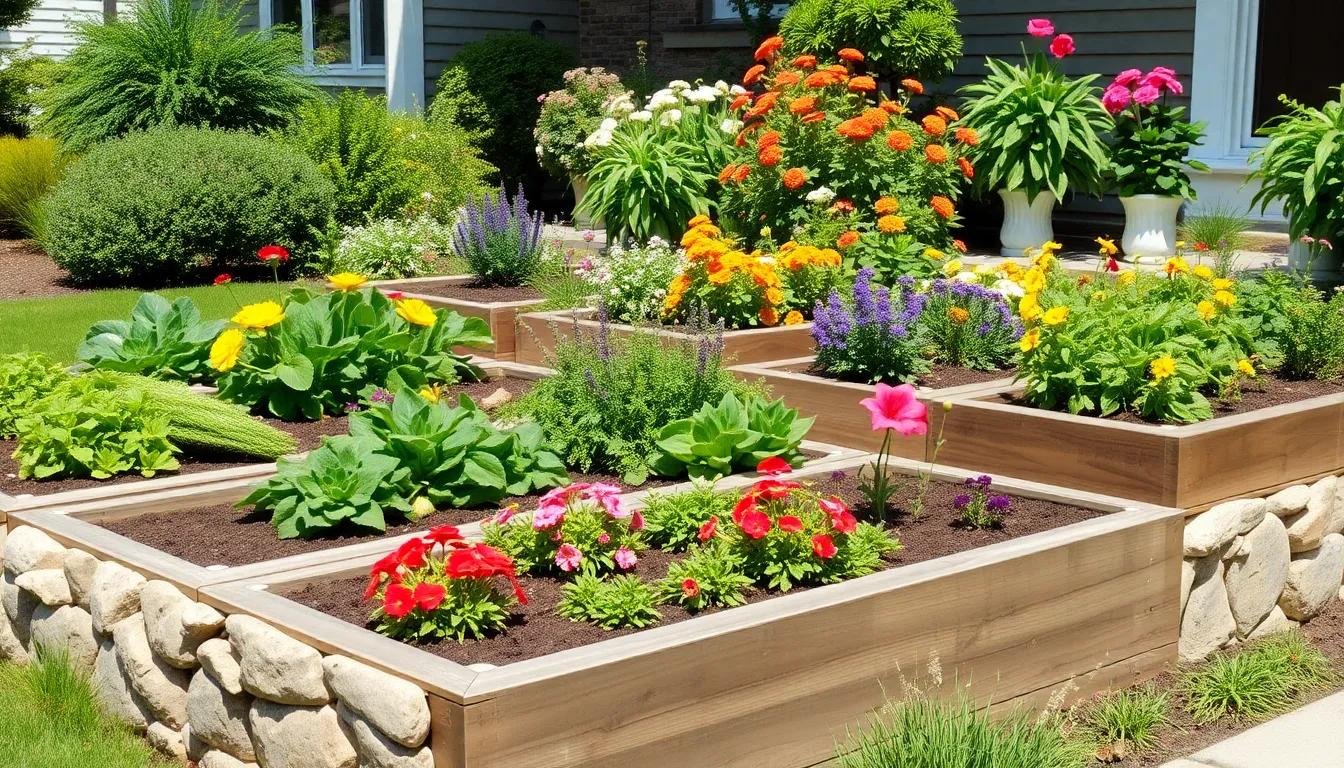
Transforming your front yard vegetable garden into a stunning industry feature requires thoughtful integration of decorative elements that complement rather than compete with your productive plants. Strategic placement of ornamental features creates visual interest while maintaining the garden’s primary function as a food source.
Install Garden Borders and Edging Materials
Installing quality borders and edging materials creates the foundation for a polished, professional-looking front yard vegetable garden. Brick pavers offer a classic appearance that complements most home architectural styles while providing excellent durability against weather and foot traffic. Natural stone edging creates an organic, timeless look that weaves seamlessly with both traditional and contemporary landscaping designs.
Wood borders provide a warm, natural aesthetic that works particularly well with raised bed configurations. Cedar and redwood resist rot naturally, making them excellent long-term investments for garden edging projects. Metal edging delivers clean, modern lines that prevent grass encroachment while requiring minimal maintenance throughout growing seasons.
Raised beds with decorative borders elevate both the literal and visual impact of your vegetable garden. Stone or brick raised bed walls create permanent structure while improving soil drainage and root development. Woven wicker materials add texture and natural charm to raised bed designs, particularly when paired with climbing vegetables on coordinating trellises.
Include Seasonal Flowers Among Vegetable Plants
Interspersing seasonal flowers throughout your vegetable beds creates the classic potager garden style that maximizes visual appeal while supporting plant health. Marigolds planted between tomato and pepper rows provide natural pest deterrence while adding vibrant orange and yellow blooms from spring through fall. Nasturtiums offer edible flowers and leaves that enhance both garden beauty and kitchen creativity, with their trailing growth habit perfect for border plantings.
Zinnias deliver continuous color in beds containing leafy greens, creating striking contrasts with their bold blooms against vegetable foliage. These annual flowers attract beneficial pollinators that improve fruit and seed production in nearby vegetable plants. Low-maintenance perennial options like lavender create permanent structure along garden borders while providing fragrance and attracting beneficial insects throughout multiple growing seasons.
Seasonal flower rotation ensures year-round interest in your front yard vegetable garden. Spring bulbs like tulips and daffodils emerge before warm-season vegetables, providing early color when beds might otherwise appear bare. Summer annuals fill gaps between vegetable plantings, while fall-blooming flowers like chrysanthemums extend the garden’s appeal into cooler months when many vegetables finish their productive cycles.
Plan for Year-Round Growing and Seasonal Transitions
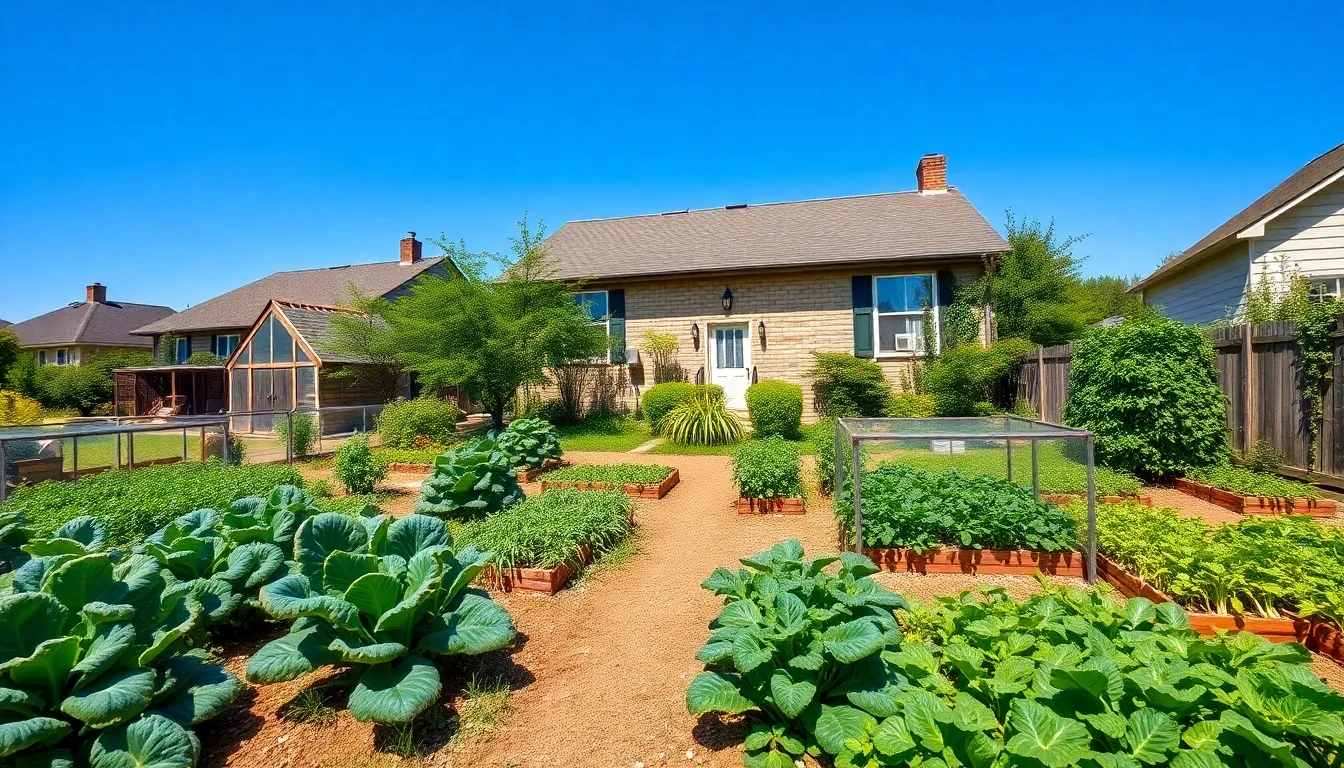
Strategic planning enables continuous harvests throughout every season in your front yard vegetable garden. Implementing succession planting and winter production methods ensures fresh produce remains available year round.
Carry out Succession Planting Strategies
Continuous harvest systems maximize productivity by planting small batches of the same crop every few weeks throughout the growing season. Staggering plantings prevents overwhelming harvests and extends your fresh vegetable supply from spring through fall.
Crop rotation practices maintain soil health while reducing pest and disease buildup in your front yard beds. Rotating plant families like nightshades, brassicas, and legumes prevents nutrient depletion and keeps your garden thriving season after season.
Seasonal crop selection optimizes growing conditions by matching vegetables to their preferred temperatures. Cool season crops like broccoli and kale flourish in spring and fall temperatures, while warm season crops like tomatoes require summer heat for peak production.
Timing strategies ensure seamless transitions between growing seasons in your front yard space. Planning your planting schedule allows you to harvest late season crops while simultaneously preparing beds for the next season’s vegetables.
Prepare Cold Frames for Winter Vegetable Production
Cold frame construction extends your growing season by protecting winter crops from extreme temperatures and harsh weather conditions. Building frames with wood or metal materials and topping them with polyethylene or glass creates the perfect microclimate for hardy vegetables.
Insulation and ventilation systems regulate temperature within your cold frames throughout winter months. Adding insulation around the frame prevents heat loss while proper ventilation prevents overheating during warmer winter days when temperatures fluctuate.
Winter crop selection focuses on hardy vegetables that can withstand cold temperatures while continuing to produce fresh food. Spinach, carrots, and Brussels sprouts thrive in cold frame environments and provide nutritious harvests throughout the winter season.
Strategic placement maximizes sun exposure for your cold frames in the front yard industry. Positioning frames in south facing areas captures maximum winter sunlight while protecting plants from harsh northern winds that could damage tender growth.
Consider Neighborhood Guidelines and HOA Restrictions
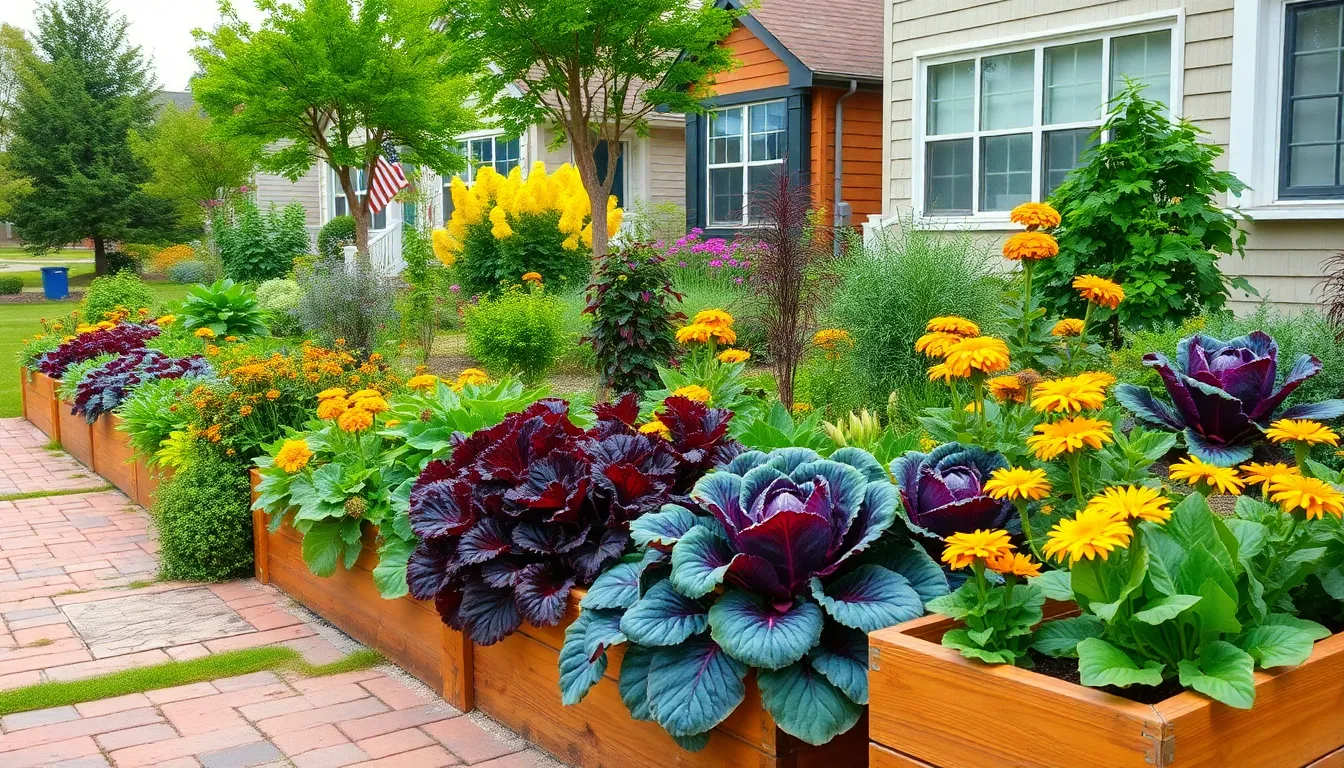
Before we transform our front yard into a productive vegetable garden, we must navigate the legal and social industry of our community. Understanding local regulations and neighborhood expectations ensures our garden dreams don’t become compliance nightmares.
Research Local Zoning Laws for Front Yard Gardens
Zoning laws vary significantly across municipalities and can directly impact our front yard gardening plans. We should contact our local planning department to understand exact regulations about garden size, location, and plant types allowed in residential front yards. Many areas have restrictions on garden height, setback requirements from property lines, and percentage of yard coverage permitted for cultivation.
Municipal codes often specify whether structures like raised beds, trellises, or greenhouses are permitted in front yard spaces. Some jurisdictions require permits for permanent garden installations or have limitations on water features and irrigation systems. We’ll want to document these requirements before investing in materials or beginning construction.
Professional consultation with local extension offices can provide valuable insights into regional gardening regulations. These experts understand both legal requirements and practical considerations for successful front yard vegetable growing in our exact climate zone.
Design Gardens That Complement Neighborhood Aesthetics
Successful front yard vegetable gardens seamlessly blend productivity with visual appeal to maintain neighborhood harmony. We should observe surrounding properties to understand prevailing industry styles, color palettes, and design elements that define our community’s character. This analysis helps us create gardens that enhance rather than detract from neighborhood curb appeal.
Incorporating ornamental plants alongside vegetables creates a potager style garden that satisfies both aesthetic and functional goals. Colorful vegetables like Swiss chard, purple cabbage, and rainbow carrots can serve as focal points while flowering companions like marigolds and nasturtiums add beauty and attract beneficial pollinators.
Strategic placement of attractive materials like brick pavers, natural stone borders, and quality wood raised beds elevates the garden’s appearance. These design elements should complement our home’s architectural style and surrounding industry features. Well designed pathways using gravel or stepping stones provide both functionality and visual structure.
Seasonal flower rotation ensures year round interest while maintaining the garden’s decorative appeal. We can plant spring bulbs, summer annuals, and fall chrysanthemums among our vegetables to create continuous color throughout the growing season. This approach demonstrates our commitment to neighborhood beautification while maximizing food production.
Conclusion
We’ve explored how front yard vegetable gardens can transform your outdoor space into a productive and beautiful industry that serves both practical and aesthetic purposes. By implementing these design strategies and plant selections you’ll create a garden that not only feeds your family but also enhances your home’s curb appeal.
Remember that success comes from thoughtful planning and choosing the right combination of vegetables flowers and structural elements for your exact space and climate. Whether you opt for raised beds vertical systems or edible landscaping the key is creating a cohesive design that reflects your personal style while meeting your gardening goals.
Your front yard vegetable garden will become a source of pride and fresh produce for years to come. Start small experiment with different approaches and watch as your beautiful and bountiful garden becomes the envy of your neighborhood.
Frequently Asked Questions
Can I grow vegetables in my front yard instead of my backyard?
Yes, front yard vegetable gardens are becoming increasingly popular and offer many benefits. They can enhance curb appeal while providing fresh produce for your kitchen. With proper planning and design, you can create an attractive and productive garden that impresses neighbors and serves as a functional food source.
How much sunlight do front yard vegetables need?
Most vegetables require 6-8 hours of direct sunlight daily for optimal growth. South-facing areas typically receive the most consistent sunlight throughout the day. Observe your front yard’s light patterns across different seasons and document shadow patterns from trees and buildings to identify the best locations for planting.
What are the best design options for front yard vegetable gardens?
Popular design options include raised bed gardens with quality materials that complement your home’s aesthetic, edible landscaping that combines vegetables with ornamental plants, and vertical growing systems for smaller spaces. Tiered garden levels with stone borders and potager-style gardens mixing vegetables with flowers create visually appealing designs.
Are there any legal restrictions for front yard vegetable gardens?
Yes, many neighborhoods have HOA restrictions or local zoning laws that regulate front yard gardens. Research your area’s regulations regarding garden size, location, and acceptable plant types before starting. Ensure your garden complements neighborhood aesthetics by incorporating ornamental plants and attractive materials to maintain curb appeal.
What vegetables require the least maintenance for busy homeowners?
Low-maintenance options include hardy perennial herbs like rosemary and thyme, perennial vegetables such as asparagus and rhubarb, and disease-resistant varieties of common crops. Drought-tolerant plants and native species also reduce watering needs. These crops provide years of harvests with minimal ongoing care and attention.
How can I make my front yard vegetable garden look more decorative?
Integrate decorative elements like quality borders using brick pavers, natural stone, or metal edging. Create a potager garden by interspersing seasonal flowers like marigolds, nasturtiums, and zinnias among vegetables. Use colorful vegetables like Swiss chard, purple cabbage, and rainbow carrots as focal points for visual interest.
What’s the best way to water a front yard vegetable garden?
Install drip irrigation systems for consistent, efficient watering, especially for beds located farther from water sources. Consider proximity to existing water access when planning your garden layout. Proper irrigation ensures uniform moisture distribution and reduces maintenance time while promoting healthy plant growth throughout the growing season.
How do I create pathways in my front yard vegetable garden?
Design gravel or stone walking paths that complement your home’s architectural style and provide excellent drainage. Stepping stones work well for smaller spaces, offering a casual pathway option. Strategic pathway placement prevents soil compaction, enhances accessibility, and creates an organized, inviting garden design that’s easy to maintain.

